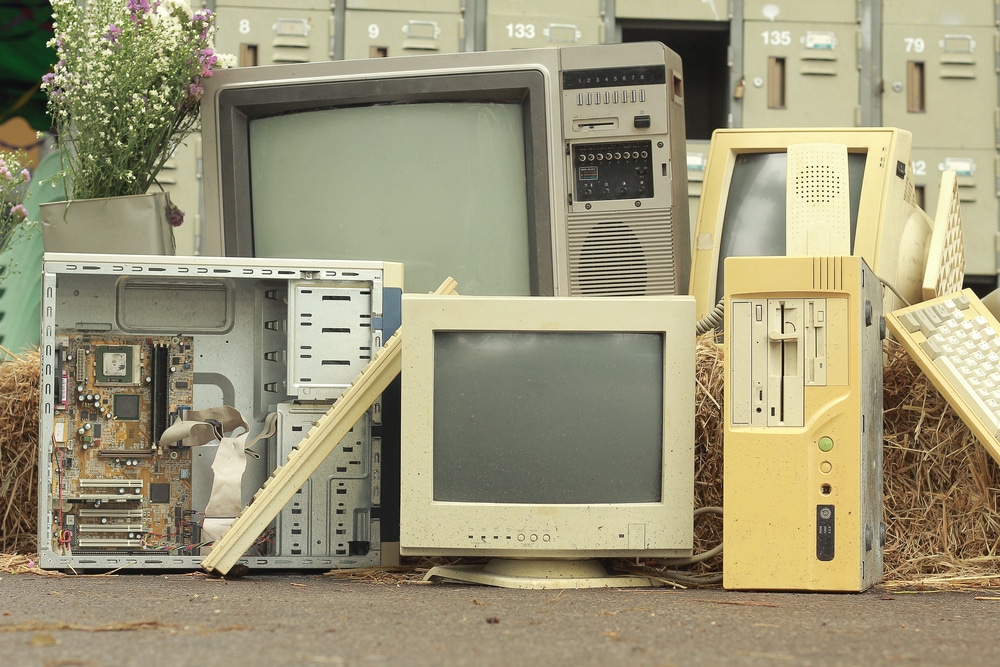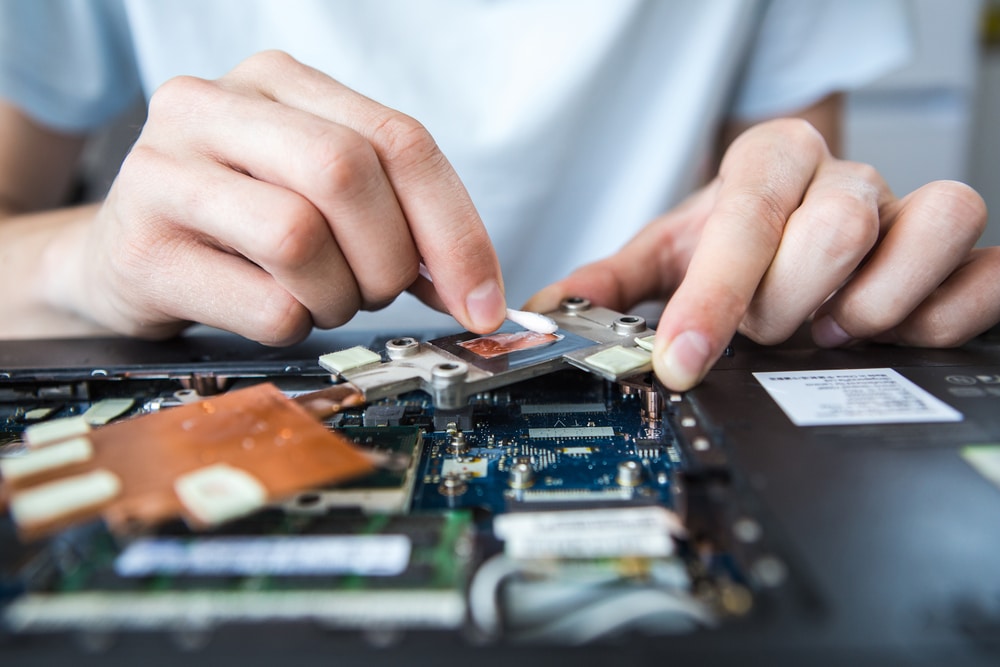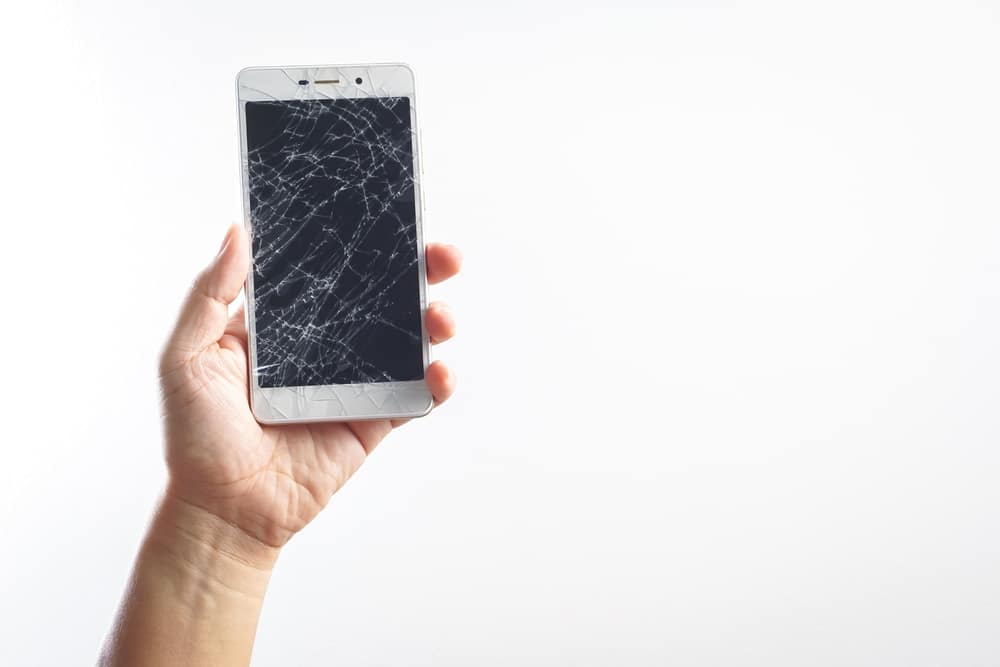Jasmine Birtles
Your money-making expert. Financial journalist, TV and radio personality.


We live in a throwaway society. Most consumers want the latest, most-stylish electricals, and are less-concerned with whether or not it will conk out before the decade’s out.
But while you might prefer to buy a new American-style fridge rather than use the old under-the-counter jobbie you inherited with the house, you don’t have to rush straight to the electrical shop at the first sign things are going wrong.
Products may not need to be made to the same indestructible standards as they were in the 50s, but you could save hundreds of pounds a year repairing perfectly salvageable (and in-Vogue) tech, gadgets and electricals rather than always replacing them just because they are out of warranty.
Read on, our click on the below links, to find out what can be saved – and how:

Two million tonnes of electricals are sent to landfill each year in the UK.
A staggering two million tonnes of waste electrical and electronic equipment or ‘WEEE’ is sent to landfill in the UK every year.
WEEE is basically anything with a battery or plug, and includes large household appliances, like fridges, cookers, microwaves, and washing machines, as well as smaller appliances like irons, toasters, clocks, phones, games consoles and electric toothbrushes.
Large household appliances, like ovens, fridges and washing machines currently make up over 40% of this total, but there are large volumes of other valuable equipment, including over two million TVs discarded each year, as well as valuable computers, hair dryers, electrical tools, digital watches, and medical devices.
Throwing away rather than fixing such vast amounts of electronics is not only bad for our bank balances, it’s also bad for the environment.
Many of these discarded items contain hazardous components, including arsenic, cadmium, lead, mercury, phosphorous pentachloride and certain flame retardants. These pose a number of health risks that need to be adequately managed.
It’s not just the recycling centres that are overflowing. As Scott Butler, who launched the website Recycle Your Electricals, points out, “150,000 tonnes” of small electrical items “that could be repaired, or at the very least recycled, are going in our domestic rubbish bins every year”. This includes toasters, kettles, electric tooth brushes and shavers.
Butler set up Recycle Your Electricals to help divert as many of these smaller items from landfill as possible. It’s a really useful site that asks you what items you have, and whether you want to get them fixed, send them to be recycled, or donate them to charity. Depending on how you answer, it then directs you to companies in your local area that will be able to help you.
Some of the results may surprise you. For example, it turns out the electrical store Currys will repair your broken coffee machine and laptop – even if you didn’t buy it from them.
The Recycle Your Electricals website also signposts you to other sites where you can learn, for instance, how to fix everything from that broken coffee machine to tractor and aircraft parts yourself (as you do!).

One of the main problems with fixing broken gadgets, whether you try to do it yourself or pay a professional to do it for you, is the cost of replacement parts. This is especially true if you buy the parts from the manufacturer direct – who can charge a small fortune for parts they probably bought for fraction of the price from China.
That said, it’s usually better – and often cheaper – to buy the parts directly from the manufacturer, according to Heather Powell, who worked for an electrical retail firm for over 40 years.
“If you get the replacement from Amazon it might not be right. And it won’t last as long.”
She would always suggest calling the company you bought your electronics from to see if they are under warranty, or can fix them for you, before buying a replacement.
“Most manufacturers give you two years’ warranty,” said Powell. “A few give three. Siemens is five. Generally you only need to keep the receipt.”
To read more on expired warranties, see this.
If your item is no longer under warranty, you need to decide whether it is financially worthwhile trying to save it.
As Powell explained, some items, like “kettles, toasters and even small appliances like microwaves are so cheap to buy new, there’s no point paying to fix it”.
Most repair shops will charge a flat ‘inspection fee’ to look at any items that aren’t working which they will then knock off the cost of the repair, if the repair exceeds that amount.
An inspection fee will typically cost around £35, however, as Powell noted, you shouldn’t pay that unless the repair shops thinks they can repair the item, or even needs to.
“The beauty of a family firm is we give free advice. If people call up, I’d tell tell them to do certain checks, to see if it’s really a fault,” she said. “A lot of people don’t read their manuals, and in every manual there is a troubleshooter telling you what to do if it stops working.”

Broken ‘white goods’ can usually be repaired quite cheaply.
A lot of ‘broken’ electronics are actually not broken at all. As Powell said: “With washing machines, dishwashers and tumble dryers, most people don’t clean them like the instructions tell them to, which is all that is wrong with them. That’s especially true with tumble dryers. There’s a condenser part that people can’t see, which is often the cause of the problem.”
Almost all broken electricals can be salvaged, however you need to make sure the cost of getting them repaired is worth the outlay.
On average, it costs from £75 to fix a faulty oven, fridge or freezer, and £55 to fix a broken washing machine, tumble-dryer of laptop.
Of course the amount will likely be more or less depending on where you live in the UK. But even in London, you can find prices akin to the above if you check out Repair Giant, which offers same-day service, fixed fee, and six months’ warranty on repairs.
While the above is a good starting point, the actual cost will depend on the type of fault. For example, washing machines are typically much cheaper to repair than replace.
However, as Powell pointed out, the opposite could be true, if the fault is caused by a washing machine’s bearings wearing out.
“If the bearings have gone it will cost £150 to £200 to replace, so it’s not worth it,” she said.
“I’d always tell people to put their hands inside the drum and whizz it around and see if you can hear it grinding, as it’s probably the drum in that case.
“If it’s anything other than drum, it’s definitely worth paying to get it repaired.
“A lot of people won’t bother getting a washer repaired if it breaks after three years. I got mine repaired when it was 10 years old, and it turned out to only be the fuse. It’s about 14 years old now and still working fine.”
Cracked TV screens are also extremely expensive to repair these days, as a replacement can end up costing more than a new TV.
There are loads of local groups where enthusiasts get together and help each other learn new skills, from soldering and 3D printing to sewing and bike repairs (if you have more than just electricals you need to fix).
The Repair Cafe has over 250 free meeting sites across the UK and Ireland, which should have all the tools, materials, and knowledgeable amateurs to help you breathe new life into your broken tech.
They’re a great place to go to meet new like-minded friends and learn some new skills that could save you a pretty penny on repairs and replacements.
Another option is to go a Tupperware-style party where you can learn how to fix old kettles and electronics. They’re organised by the group Restart, which claims that a whopping 50% of all the electricals we send to recycling are fixable. To find a party near you, see here.
If you learn to mend broken appliances, you could always make a nice side hustle fixing them up and selling them on.
Preloved is a good site if you’re trying to get a fair whack back for higher-spec ‘white goods’. There are lots of fridges and fridge-freezers listed on there for £400 to £800, unlike Gumtree, Facebook and other free sites like NextDoor, where fridges, ovens and the like, tend to sell for a song.

Doing up old phones is another potential money-spinner. The average household has at least two smart phones that are no longer used, according to Music Magpie, and chances are you have at least two smart phones in a cupboard drawer that you could fix up and sell on.
These phones are also full of precious metals like cobalt, that would otherwise need to be mined (often by children and slaves) in the Congo, so there’s added incentive to recycle and re-use broken or out-of-date tech.
There are loads of YouTube tutorials out there on how to fix broken screens on phones and laptops.
You can also do a face-to-face course with Your Fix, whose team will teach you how to change broken mobile phone and tablet screens, batteries and all the other skills needed to launch your own repair business, from £299.
Given that repair shops charge up to £170 to repair a broken iPhone phone screen (including parts) you only need to fix a few phones to break even.
You can see which of the numerous second-hand mobile phone sites offer the best price for your phone, by checking out the comparison site Compare My Mobile, which collates all the best deals and directs you to the respective websites.
Newer models re-sell for large amounts. However, if your phone is more than a few years old, you won’t get much for it. The Samsung Galaxy J6, which one of our team bought in late-2019, will only fetch £5 on MazumaMobile. Even the Samsung A13 they spent £150 replacing it with in May this year would only fetch between £22 and £54 now, according to Compare My Mobile.
The problem with a lot of tech, however, is they make it extremely difficult to fix yourself (think of mobile phones, and how you can’t even access the battery on newer models).
Apple even used to invalidate your warranty if you fixed you tried to fix your broken screen yourself (rather than pay Apple Care to do it).
Luckily, Apple quickly ditched that policy, but if you do repair a part yourself, that part is effectively invalidated on your warranty, meaning that if you fixed a broken screen or paid someone other than Apple to do it, your warranty will be valid on everything except a future broken screen. For more tips on selling old and reconditioned phones, read here.
Other expensive electronics that you really ought to consider getting repaired are GHD hair straighteners, which are going to cost you between £149 and £379 to replace.
There are loads of companies out there specialising in GHD repairs, like GHD Angels, which charges £24.95, plus postage, to fix cracked wands. GHD Angels will also pay you £20 to £25 for products that are beyond repair. It even has a YouTube channel on repairing GHDs, if you want to have a stab yourself.
Again, there are loads of YouTubers out there with tutorials on how to fix GHDs and other expensive beauty gadgets.
Dysons and other vacuum cleaners are another type of electronic that are often easy to fix. The second-hand salesman at your local market or specialist repair shops that sells reconditioned Dysons will usually offer to either buy your old Dyson (as a part exchange) or sell you the bits you need to fix it.
A lot of seemingly ‘broken’ Dysons just need a new filter to get them running again.
One of our team sold an old Dyson that wasn’t salvageable for £20 to one of these repairers (who strip broken vacuums down for parts). While another ‘broken’ Dyson was fixed by simply replacing the battery with one from another machine.
If you have other tech you no longer want or use, see our piece on making money with a Tech Spring Clean.
